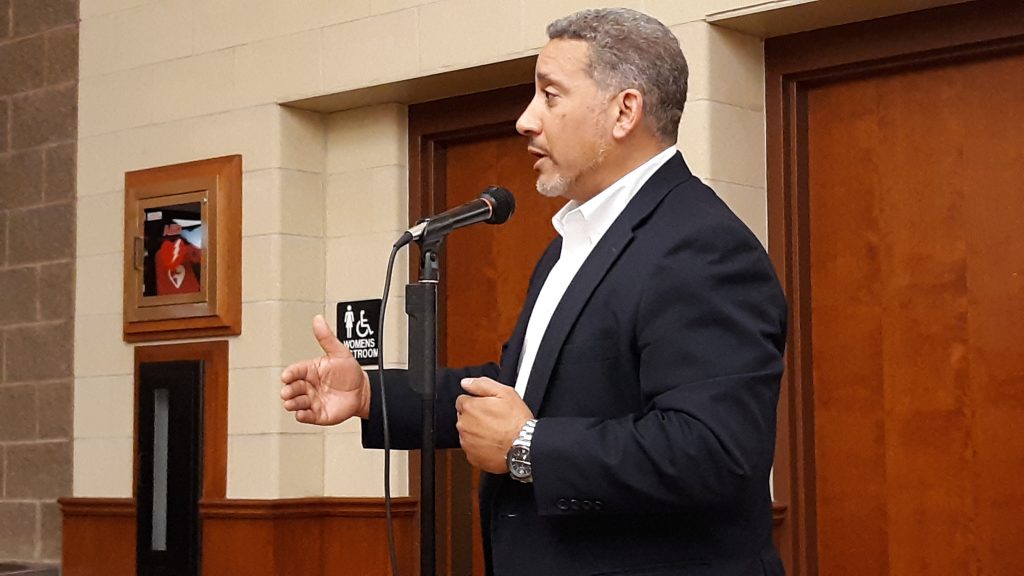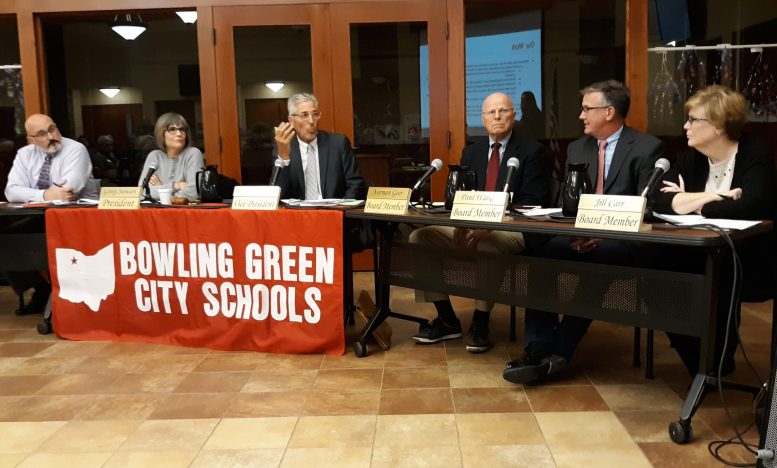By JAN LARSON McLAUGHLIN
BG Independent News
Bowling Green School District voters will see two renewal levies on the March ballot. The levies – which will not be asking for new money – will be used for school operating expenses.
The board of education voted unanimously Tuesday evening to take the next steps to put a renewal of a 4.2-mill current expense levy, and renewal of a 1.6-mill emergency levy on the ballot – both for a continuing period of time.
Failure to renew the levies – which both expire in 2020 – would be disastrous for the district, according to the district’s financial consultant Dave Conley.
(Reporter’s note: The board of elections plans to certify the counts from the Nov. 5 election Wednesday morning. On election night, the school bond issue had lost by 71 votes. An update with the latest numbers will be posted Wednesday morning in the BG Independent News.)
Voters in the Bowling Green district have consistently passed renewal operating levies – but these will be a little different since the board is also asking the voters to approve them for a continuing period.
And Tuesday evening at the board meeting, a few of the comments made clearly showed that some of the scars from the bitter battle over the bond issue were still raw.
There are upsides to turning the five-year levies into continuing levies.
First, the district could reduce the number of times it has to ask voters for the same money. Without changing the taxing structure, the district may face 20 ballots over the next 25 years, Conley said.

Second, having continuing levy support would help the district’s five-year forecast. Since that income would then be guaranteed, the district could get by with lower reserves. Right now, without continuing levy support, the district should not allow its balance to go below $8 million, Conley said.
Third, having continuing levies would allow for more precise long-term planning.
Other benefits to the district of continuing levies include higher bond ratings, preservation of rollbacks for taxpayers, and the ability to capture tax revenue on new development in the district.
But there are downsides.
First, some voters like the district having to come back every five years for their approval – even though it’s not new money.
Second, the existing emergency levy can’t become “continuing” unless it becomes a “substitute” levy. The rollback for taxpayers would be preserved, but the required ballot wording is very confusing – even for people who work with school finances for a living, like Conley.
And if the voters rejected the levies based on their continuing status, the board would not be able to renew them – and rollback benefits would be lost for taxpayers.
The board was in agreement that keeping the rollback benefits for taxpayers is important. In 2013, the state decided to stop paying the 12.5 percent rollback on school levies – leaving the entire bill for taxpayers to foot.
The state will continue paying that percentage on any levy amounts approved prior to 2013. So if the millage is kept the same, and voters approve a renewal, they will still benefit from the rollback.
Conley also addressed the issue of the district’s general fund balance – which has been criticized by some for sitting as high as $15 million.
That large of a general fund balance is necessary, Conley explained.
The state requires that type of balance. If the district failed to renew a levy, or a recession hits, that balance could quickly be wiped out. However, the district could survive with a much smaller safety net if it changed to a less risky tax structure – and passing continuing levies is one way to do that.
“So the bottom line is, we have money we can’t use unless we do something about it,” board member Norm Geer said. “There’s no reason for us to have $6.8 million for a safety net.”
Bowling Green City Schools has not gotten any new tax money since 2010. Voters defeated an income tax attempt in 2012.
“I have never seen a school district have no increase in expenses in a decade,” Conley said earlier this month.
The district’s annual expenses were $30 million in 2009 – and remained the same through 2018.
“This is akin to holding your breath,” Conley said earlier this month. “At some point, you’re going to have to start breathing again.”





